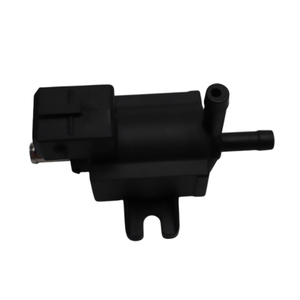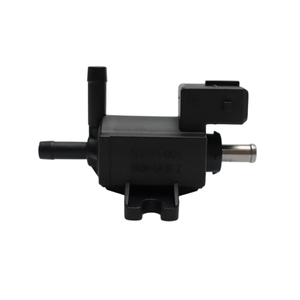
All categories
Featured selections
Trade Assurance
Buyer Central
Help Center
Get the app
Become a supplier

(1061 products available)




















































A cold air intake turbo is an aftermarket device that car owners install in the air intake system of their vehicles. The cold air intake turbo draws cooler air from outside the engine. It then pushes this air into the engine to enhance combustion, thereby improving torque and horsepower. Generally, manufacturers install air filters in the intake system to keep debris and dust away from the engine. However, this reduces airflow into the engine. As such, the engine works harder, which affects fuel efficiency. By replacing the factory air intake, a cold air intake turbo allows more air into the engine, boosting its performance.
Nonetheless, when buying a cold air intake turbo for resale, buyers can choose from different types, all of which are suitable for various car models. Here are the most popular types:
Cold air intake systems are available in various specifications to cater to different vehicle models and engine requirements. Here are some common specifications:
Pipe Diameter
The pipe diameter is the measurement of the cold air intake pipe's width. It is an important specification because it affects the volume of air flowing into the engine. A larger pipe diameter reduces airflow resistance and allows more air into the engine. This can improve throttle response and increase power output. However, too large a pipe can result in excessive noise or lose low-end torque. Common pipe diameters range from 2.5 to 4 inches, with specific sizes varying based on the vehicle's make and model.
Filter Size
The intake air filter size determines the amount of air it can process while filtering out contaminants. A larger filter can capture more particulate matter and provide a steadier airflow to the engine. However, it may take up more space and require modifications for installation. Filter sizes are usually expressed in diameter and length. For example, a 6-inch diameter and 8-inch-long filter will fit into the intake system.
Material
Cold air intake systems are typically made from aluminum, plastic, or stainless steel. Aluminum is a popular material because it is lightweight and corrosion-resistant, making it suitable for long-term use. Plastic is another common material because it is affordable and can be molded into complex shapes easily.
Filter Media
Filter media refers to the material used to create the filter element in a cold air intake system. Common options include cotton gauze, foam, and non-woven synthetic fabrics. Cotton gauze is durable and offers excellent filtration efficiency. Foam filters strike a balance between good airflow and filtration but require frequent cleaning. Non-woven synthetic fabrics provide effective filtration and are low maintenance.
Heat Shield
A heat shield minimizes heat transfer from the engine bay to the intake air. It is usually made from aluminum or steel and designed to fit around the intake pipe. Heat shields come in different sizes and shapes, depending on the cold air intake system's design.
Cold air intake systems require regular maintenance to ensure optimal performance and longevity. Here are some general maintenance tips:
The following factors should be considered when choosing a cold air intake turbo for retail.
Vehicle compatibility
The first step is to find out the makes and models of the vehicles that will be using the CAI intake. This is because not all CAI intakes are designed to fit every vehicle. Manufacturers often design CAI intake systems that are specifically designed to fit a particular vehicle model.
Quality and performance
To attract customers, buyers should source for high-quality cold air intake turbos from reputable suppliers. The CAI intake should be made from high-quality materials that can withstand the conditions under the hood. Furthermore, the CAI intake should have high-quality filters that can effectively filter debris and dust to ensure only clean air reaches the engine.
Legal compliance
Depending on the location, some buyers may need to ensure that the cold air intake they purchase comply with emissions regulations. For instance, some regions have strict emissions regulations that prohibit the use of certain aftermarket parts that improve emissions. Therefore, buyers should check the legal requirements and ensure the CAI intake they purchase are legal compliant.
Ease of installation
When purchasing cold air intakes for resale, buyers should consider the ease of installation. Many customers prefer CAI intakes that they can easily install themselves. Furthermore, CAI intakes that come with installation instructions and all necessary components are easier to install.
Price
Buyers should shop around and find cold air intake turbos that fit their budget. It is worth noting that price shouldn't be the only consideration. Cold air intake turbos that are extremely cheap are likely to be of inferior quality.
Customer reviews and recommendations
Before purchasing cold air intake turbos for resale, buyers should read customer reviews and recommendations. This will give them an idea of the performance and quality of the intake turbo.
Installing a cold air intake is one of the DIY car projects that can be done in a few hours. Manufacturers provide detailed instructions on how to install a cold air intake. Here is a summarized version of the steps to take.
It is advisable to periodically check the cold air intake system to make sure it is in good condition. Replacing the cold air intake can be a simple task. Follow the manufacturer's manual to know what needs to be done.
To replace the cold air intake, first, remove the old intake system. This is done by loosening the clamps and removing the bolts. Then, install the new intake system. Make sure the air filter and intake tube are properly fitted.
Q1: Does the color of the cold air intake matter?
A1: The color of the cold air intake does not affect its performance. It is usually available in various colors to suit different customers' aesthetic preferences.
Q2: Can someone install a cold air intake on their own?
A2: Yes, a cold air intake can be installed easily. Its installation can be done by following the instructions provided in the user manual or by watching online tutorial videos.
Q3: Does the cold air intake come with a warranty?
A3: Many cold air intake kits come with a warranty. The warranty period may vary depending on the manufacturer and the specific kit purchased.